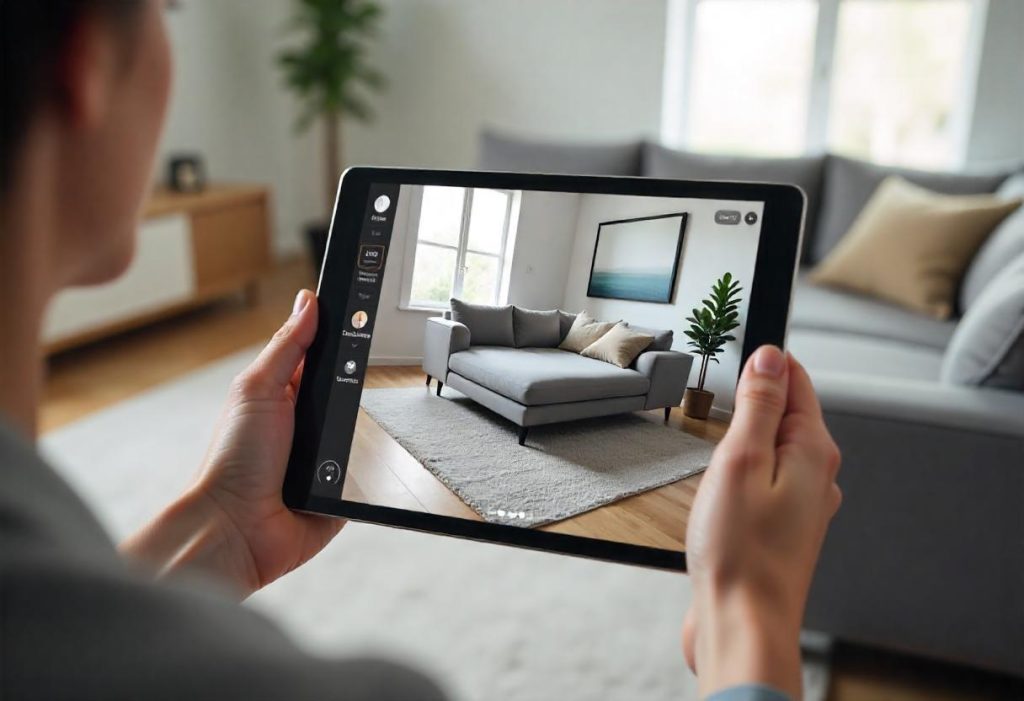In the fast-evolving world of commerce, few technologies have made as significant and immediate an impact as augmented reality (AR). By blending physical and digital realms, AR has reshaped how consumers interact with products and brands, adding an entirely new dimension to retail engagement. Augmented Reality in retail overlays digital content onto real-world environments, allowing shoppers to visualize, customize, and experience products in unprecedented ways—all before making a purchase.

From Imagination to Immersion
Traditionally, retail relied heavily on static displays, catalogs, and showrooms. The challenge for customers was to imagine how a piece of furniture would look in their living room or whether a pair of sunglasses would suit their face. AR eliminates this guesswork. Through a smartphone, tablet, or AR glasses, consumers can now see exactly how a product will look and function in their specific context.
With Zolak Showroom, for instance, users can take a photo of their own space and digitally remove existing furniture to test new pieces from a brand catalog. This not only increases confidence in the purchase but also dramatically reduces costly returns.
Empowering the Try-Before-You-Buy Model
Beauty and fashion industries have been particularly quick to adopt AR to offer try-on experiences. Brands like Sephora and L’Oréal use facial recognition and AR filters to let customers try on makeup virtually. In furniture and home décor, platforms like Zolak offer detailed configurators that allow users to switch fabrics, colors, finishes, and even layouts in an immersive, lifelike way. As a result, shoppers feel more informed and emotionally engaged—a recipe for brand loyalty.
In apparel, AR-powered fitting rooms allow customers to see how clothes will look on them without physically trying them on. This is particularly valuable in e-commerce, where physical interaction is impossible. Virtual fitting solutions, like those from Zeekit or Vue.ai, leverage AR and AI to generate realistic images of how garments will drape on different body types, solving one of the biggest pain points in online fashion shopping.
Enhancing In-Store Engagement
While e-commerce garners much attention, AR is also revolutionizing physical retail spaces. Smart mirrors in dressing rooms, AR kiosks, and navigation apps are turning stores into interactive hubs. A shopper in a large department store can use an AR app to navigate to a specific item or section, receive product recommendations, or scan items for detailed information and real-time reviews.
Retailers like Lowe’s have deployed AR tools to guide customers through complex product categories like home improvement. Their “In-Store Navigation” app uses AR to direct users to the exact aisle and shelf, dramatically improving the shopping experience and reducing the need for staff assistance.
Data-Driven Personalization
Behind the scenes, AR technology captures valuable data on user behavior, preferences, and interaction patterns. This data allows retailers to refine their offerings and marketing strategies. For instance, tracking which features users explore the most in a virtual furniture app can inform product development or promotional priorities.
Moreover, the integration of AR with AI means that the shopping experience can become increasingly personalized. Think of a future where an AR app recommends outfits based on your past purchases, local weather, and upcoming calendar events—all displayed right in your bedroom mirror.
Building Brand Loyalty Through Experience
In a crowded marketplace, experience is often the differentiator. AR doesn’t just sell products—it creates stories. Interactive packaging, gamified experiences, and immersive storytelling through AR can elevate brand perception. For example, sneaker brand Puma has used AR-triggered content on its shoeboxes to deliver exclusive video content, turning a simple unboxing into a brand experience.
These AR-driven narratives foster deeper emotional connections between consumers and brands. They also encourage social sharing, which acts as organic marketing in a highly competitive digital landscape.
Challenges and the Road Ahead
Despite its many advantages, AR adoption in retail is not without challenges. High development costs, technical barriers, and the need for consistent cross-platform experiences can hinder implementation. Furthermore, consumer privacy concerns around data collection remain a vital consideration.
Yet, as AR hardware becomes more affordable and developer tools more accessible, these barriers are likely to diminish. The arrival of AR-enabled wearables like Apple Vision Pro and Meta’s smart glasses also suggests that hands-free, immersive shopping could soon be the norm.
Conclusion
Augmented Reality is no longer a futuristic novelty—it’s a strategic asset for modern retail. By enhancing product interaction, reducing friction, and delivering memorable experiences, AR is helping retailers not just sell more but sell smarter.
Platforms like Zolak exemplify this shift: from virtual showrooms to advanced configurators and AI-generated imagery, they empower brands to sell more, connect more deeply, and stay ahead in a rapidly evolving landscape. As consumer expectations continue to rise, those who harness the power of AR will stand at the forefront of a more engaging, efficient, and personalized retail future.






